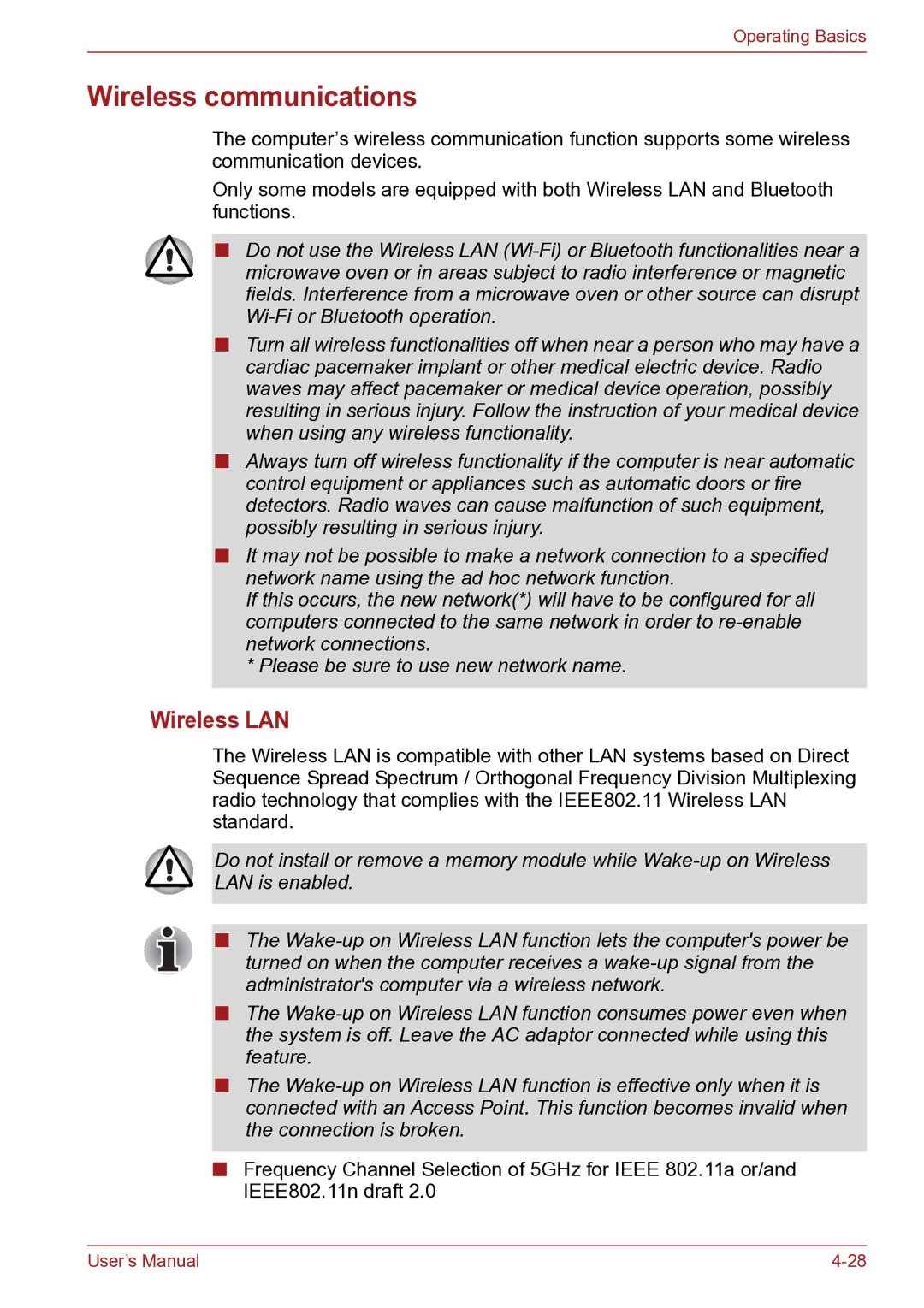
Operating Basics
Wireless communications
The computer’s wireless communication function supports some wireless communication devices.
Only some models are equipped with both Wireless LAN and Bluetooth functions.
■Do not use the Wireless LAN
■Turn all wireless functionalities off when near a person who may have a cardiac pacemaker implant or other medical electric device. Radio waves may affect pacemaker or medical device operation, possibly resulting in serious injury. Follow the instruction of your medical device when using any wireless functionality.
■Always turn off wireless functionality if the computer is near automatic control equipment or appliances such as automatic doors or fire detectors. Radio waves can cause malfunction of such equipment, possibly resulting in serious injury.
■It may not be possible to make a network connection to a specified network name using the ad hoc network function.
If this occurs, the new network(*) will have to be configured for all computers connected to the same network in order to
*Please be sure to use new network name.
Wireless LAN
The Wireless LAN is compatible with other LAN systems based on Direct Sequence Spread Spectrum / Orthogonal Frequency Division Multiplexing radio technology that complies with the IEEE802.11 Wireless LAN standard.
Do not install or remove a memory module while
■The
■The
■The
■Frequency Channel Selection of 5GHz for IEEE 802.11a or/and IEEE802.11n draft 2.0
User’s Manual |
